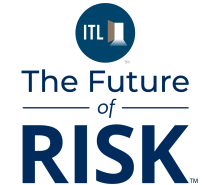Have you noticed that all life insurance carriers ask the same basic questions on their applications?
"Who is the owner of the policy?"
"Who is the beneficiary of the policy?"
"Do you have a history of cancer?"
"Do you have a history of heart disease?" et cetera.
The problem is, while they all ask the same basic questions, none are identical, and all have enough differences that a producer can't simply ask the questions once and populate the forms. This causes a great deal of redundant keying and rework by the producer, and confusion with the customer. This is particularly true when a client wants multiple policies and must endure multiple instances of carriers' electronic applications.
With this frustration in mind, ACORD pulled together stakeholders from across the life insurance value chain to develop a first-of-its-kind standard life application that could be delivered in a digital format. This new application includes all reflexive questions, is pre-cleared for use in 48 jurisdictions, and will enable improved producer and customer experience.
Many have asked for one standard life application, and due to the various industry factors and trends below, the standardized life application has finally become a reality.
See also: A New Era in Life Insurance Underwriting
Consumer Frustration With Repetitive Online Applications
Historically, there has been a gap between the digital experience expectations of consumers and what the life and annuity (L&A) industry has provided during the life insurance application process.
Imagine a typical agent-assisted sale with today's digital application, requiring an investment of about 30 to 40 minutes of the client's time. The client completes the application online, but a meaningful percentage of cases today are "issued other than applied." The natural inclination is to apply for coverage with another carrier to try for a better risk classification and lower price.
The customer is expected to begin the application again, requiring another 30 to 40 minutes. In the customer's eyes, the questions are the same and have already been answered. Why couldn't the answers be saved and used by the next carrier? This is possible with a standard life application.
NIGO Delays for Producers
Now imagine an agent-assisted sale with today's paper application, which is frequently seen in the large case market, which is known for sophisticated policy ownership (e.g., trust-owned policies, business-owned policies, etc.) and often requires multiple policies.
The producer first typically completes a client intake form (abbreviated medical history) to perform field underwriting to determine the risk class to quote. When the carrier, product type, and amount are determined, the producer needs to complete each paper application, then proofread them before having the client sign them.
Even with rigorous proofreading, there is a significant chance a key question is missed, and the policy is NIGO (Not In Good Order), causing delays in underwriting. This translates into a delay for the carrier earning premium, a delay in coverage for the client, and a delay in payment of the agent's commission.
If carriers adopt the standard life application, both online and paper applications will be dramatically improved. Application/enrollment vendors can configure their platforms to ask the questions once, then populate the carrier's electronic applications when coverage is selected. The redundant field underwriting questions can be merged with the application's medical history questions so they only need to be asked once, and NIGO rates with paper applications will be reduced because the producers won't be forced to familiarize themselves with every detail of every carrier's forms.
Pre-Cleared by the Interstate Insurance Compact
The new standardized life application is pre-cleared for use in 48 jurisdictions by the Interstate Insurance Compact. The compact implemented electronic product filing in 2007 to review and approve carrier submission of product application forms for its member states, bringing uniformity to the industry, and keeping forms maintained and updated across jurisdictions. The compact has been involved with the creation of the ACORD Standard Life Insurance Application since the beginning and strongly supports adoption.
The standardized application was created with bracketed questions that carriers can decide whether to include or exclude. Reflexive questions were also included to reduce the number of supplemental forms. Carriers that choose to use the standard application will automatically be moved to the Compact's Expedited Review Process Queue. Upon compact approval, the carrier can personalize the form to fit their branding and documentation guidelines. This shortens the form's approval time for a carrier's application from weeks to days.
See also: Removing Pain Points for Life Insurance Actuaries
A Competitive Advantage for Carriers
Carriers recognized that the question structure of a standard life application can improve data quality. The standard life application's questions were designed to incorporate behavioral science principles and industry best practices to improve response accuracy and reduce bias. They were also designed to maximize the amount of structured data and minimize free text. This will ensure maximum automation in underwriting and reduce manual interpretation on some carriers' medical and exam forms.
The reflexive questions were designed to ask only information necessary to continue underwriting. The reflexive questions refrain from asking questions the client likely won't know (or may misstate), like tumor stage and grade.
In addition, the standard application forms packet contains a full litany of avocation questions rather than just scuba and aviation. It includes motor sports racing, powerboat racing, rock climbing, back country skiing, and many others, and asks reflexive questions relevant for many of the reinsurance underwriting manuals to determine the appropriate risk classification.
ACORD has already completed the mapping of the initial data structures from the standard life application and reflexive questions to the ACORD Next-Generation Digital Standards (NGDS) JSON formats for easy manipulation and traceability.
The Future of Applying for Life Insurance
The new standardized life application will change how consumers, distributors, and carriers work through the life insurance value chain. The application offers a solution to the convoluted, time-consuming, and frustrating process of applying for life insurance policies and makes it easy to match consumers' digital expectations in 2025.
The benefits of a standardized application are threefold: Consumers avoid confusion and misrepresentation on their applications; distributors reduce NIGO delays and improve efficiency when completing multiple applications; and carriers can reduce form approval times and implementation costs with their enrollment system vendors.







